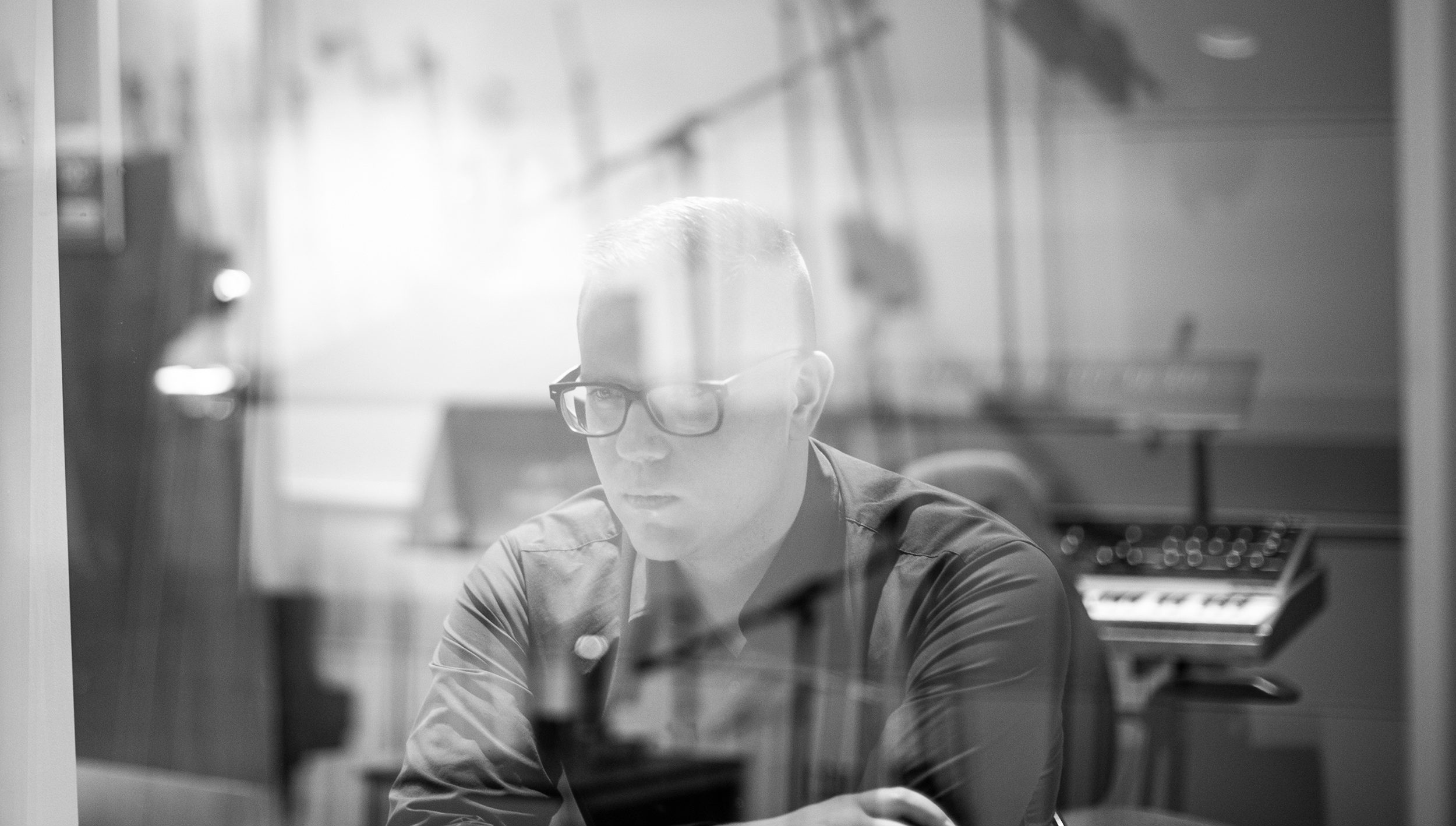
What Is Music When Almost Everything Can Be Music?
Prof. Eliot Britton tests the limits of what it means to be a composer in the 21st century
Two floors below ground in U of T’s Edward Johnson Building, in a room with almost as many hi-fi speakers as there are students gathered there to listen, Prof. Eliot Britton hits play on his laptop.
A low growl engulfs the space. There’s a sound like breaking glass, then a loping beat kicks in, guided by a simple repeated bassline. A few students nod their heads in time.
The three-minute piece of electronic music is one of about a dozen created by Britton’s students in a graduate course he teaches in the Faculty of Music on digital creativity. He had given them a simple assignment: to record a sound. One student chose a TTC station announcement, another held up a microphone to their cat as it meowed. Someone captured the gentle rattle of an umbrella being closed and shaken.
Britton then instructed his students to choose any of the sounds – except their own – to compose a short piece. They could use their computer to stretch, chop, reverse and manipulate the sounds in any way they wanted.
Composition by U of T music student Clare Wyatt
At one level, the assignment was a straightforward lesson in sampling and music production. But as Britton told me after the class dispersed, he also wanted his students to think deeply about what it means to compose music in the digital age. How do you create music that’s interesting and innovative when almost everyone has the tools to create any sound imaginable?
“It’s really about figuring out how to use technology in a meaningful and expressive way,” he says.
Britton, who is 36, has himself spent two decades using computers to say something new and different with sound. For his PhD thesis, “Metatron,” he selected Irving Berlin’s 1926 song “Blue Skies” as a motif, layering in a kaleidoscope of styles, from swing to dubstep, to trace the evolution of music technology from gramophone to laptop.
“Metatron 4 (1980) – Galvatron,” one of five sections of Metatron, by Eliot Britton and Architek Percussion
The next year, he landed a major commission from the Toronto Symphony. As with everything Britton creates, the score for “Adizokan” harnessed technology in original ways; it melded live orchestra, vocals and dance with pre-recorded sounds and video. It also included an unusual instrument: at several points during the performance, the percussionists crinkled space blankets.
What unites Britton’s varied works are an interest in rhythm and a playful sense of scale. He’ll take a soft or subtle sound (a “micro-sound”) and amplify it to cinematic intensity. He did this in “Heirloom Bison Culture” (2016), transforming recorded bison’s breath into thundering percussion for a piece performed by the Winnipeg Symphony. And in “OxBlood Diamine” (2018), he built a composition around the tiny sounds he coaxed out of a copper pen.
Christos Hatzis, a professor in the composition program at the Faculty of Music, says few other contemporary musicians demonstrate Britton’s ability to weave so many disparate elements, from electronic recordings to Indigenous traditions to orchestra, into a seamless whole. “It’s mind-blowing,” he says.
For Britton, the creative challenge of making music boils down to equal measures of technology and aesthetics. “I move back and forth between these two things,” he says. “And I do it over and over again.”
***
Britton spent his early years in Brandon, Manitoba, where his father, Stephen, taught English and history at a local high school, and his mother, Patricia, was director of alumni services for Brandon University. Neither parent claimed any musical talent but they enjoyed listening to records. With the arrival of compact discs in the mid-1980s, people began upgrading their music collections. “Everyone knew that we loved records, so they would give us their old turntables and vinyl, everything from Disney soundtracks to the avant-garde,” says Britton. He remembers that, even as a preschooler, he would sometimes spin two records at once, on different players and often at the wrong speed, to create his own “song stories.” 1 He doesn’t recall how he came up with the idea. “But it both amazed and puzzled my parents.”
Wanting to encourage their son’s interest in music in a more structured way, Britton’s parents enrolled him in piano lessons and a music-making program for children. He also sang in a boys’ choir, run by an exacting conductor. “It was a rigorous musical experience,” says Britton. “We were seven, but the director treated us like adults.”
When Britton was 10, the family moved to Winnipeg. He joined the high school band, where he took up flute then switched to double bass. During high school, he played in a 10-member ska band called Ten Too Many that doubled as a swing band; he wrote most of the songs and they recorded two albums. Ever the experimenter, he also teamed up with a punk band and an Israeli folk ensemble because, he says, “I played the fretless bass really well.” 2
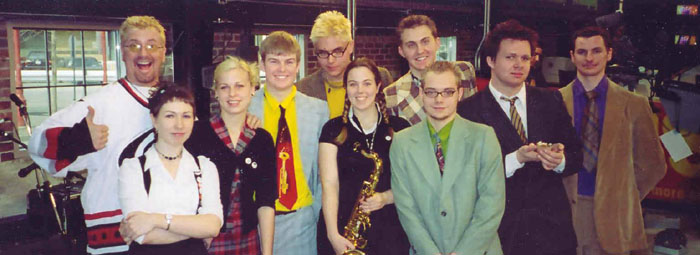
In the late 1990s and early 2000s, Winnipeg boasted a small but flourishing electronic music scene centred on breakcore – a genre defined by heavy bass drums, lots of samples and fast, choppy rhythms. At 16, Britton started attending shows, then later performing at them, getting his mom to drive him to and from clubs. As a DJ making his own music, a computer was all he needed to reach an audience. “I was so young that the idea of having the technology or the money to get a record pressed seemed incomprehensible,” he says. “But I could take my entire desktop computer to the club and play my set.” And in the breakcore scene, he had found “nerdy music people” who, like him, were passionate about playing.
With his teens coming to an end, Britton says he “just wanted to write drum and bass, and make music for video games.” But he applied to the undergraduate music program at the University of Manitoba, and was first rejected, then eventually accepted. 3 One of his professors, Michael Matthews, recognized Britton’s potential. “He and I spent a lot of time talking about what it means to compose, with a capital ‘C,’ in the 21st century,” says Britton, “and thinking about what’s important and interesting in art. He took me seriously. He taught me what it means to be an actual artist.” 4
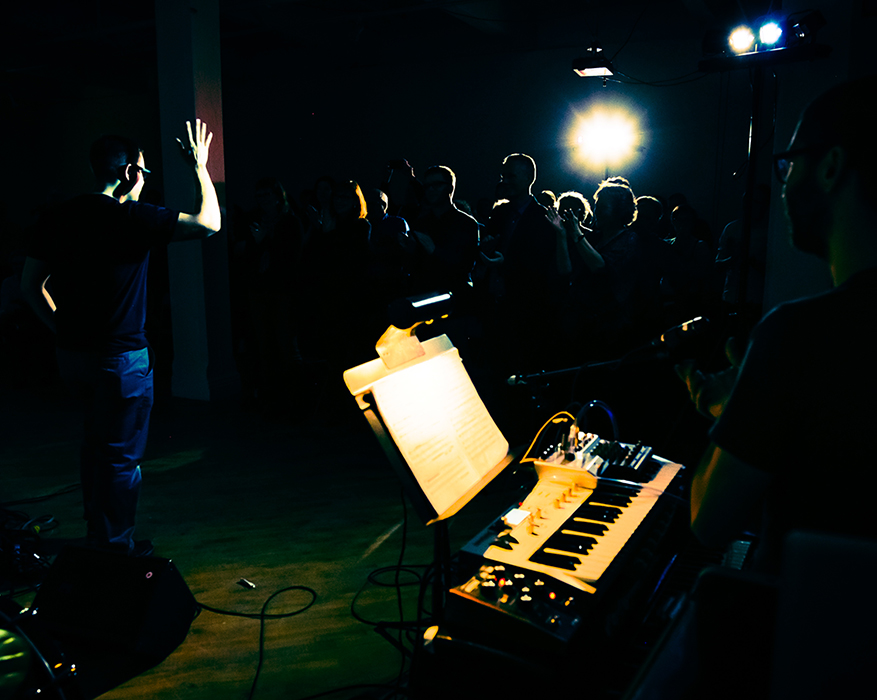
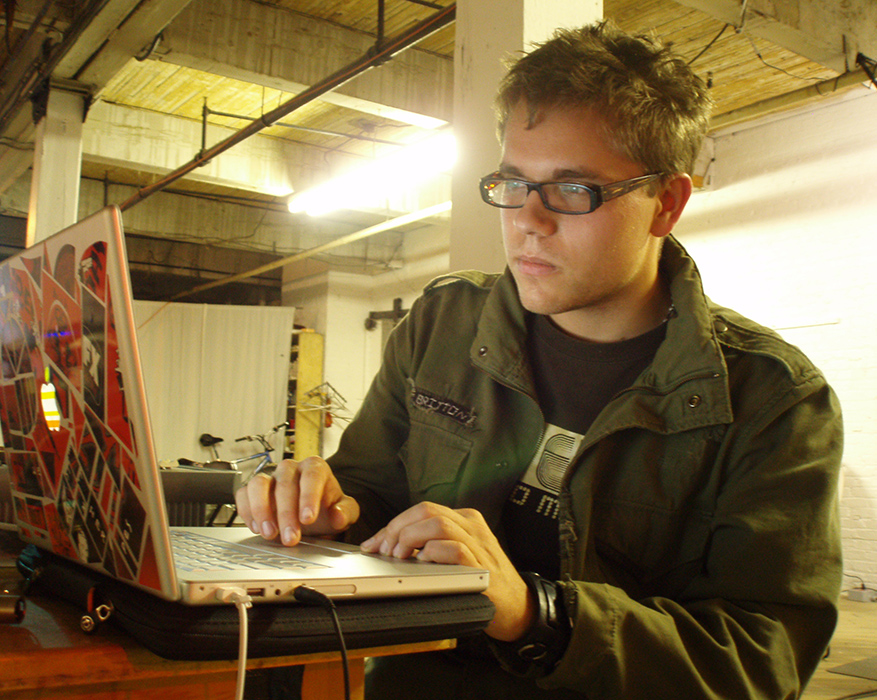
In 2016, Britton was hired as an assistant professor at U of T’s Faculty of Music. As he recalls, he had pretty much given up on the idea of being the kind of musician who writes for orchestras, and had decided to pursue his interest in technology and write for smaller ensembles. “So much of what I did in university went against the idea of what was acceptable in the world of contemporary art music. I was too rhythmic and too approachable.”
But it was around this time that Britton got a call from Sandra Laronde (BA 1988 Innis), the artistic director of Red Sky Performance, an Indigenous dance company. She was working on a Canada 150 collaboration with the Toronto Symphony Orchestra. Would he interview to write the music?
The job came with a high degree of complexity, but the requirements played to his strengths. Britton would have to collaborate over the Internet with a vocalist in Nunavut. 5 He’d have to figure out how to incorporate dance and video, and there would be little rehearsal time. The pressure would be intense. “The terms were just crazy,” he told me. “A featured soloist who had never been in a concert hall had to walk out on stage with an orchestra and just nail it.”
He landed the job. “It was a tremendous risk on their part,” he says. “There were a couple of moments when people sat me down and asked, ‘Can you actually do this?’”
The piece came together on a tight schedule – in a matter of a few months. During the premiere performance, in October 2017, Britton watched from the raised sound booth at the back of the hall. “I lose perspective,” he says. “I can’t listen in a normal way. In my mind, everything is malfunctioning.” When the audience rose to its feet for a standing ovation, Britton raced down to the floor and emerged from stage right to take his bows. Only after that, did he feel relieved. “I thought, ‘Thank god. Everything worked.’”
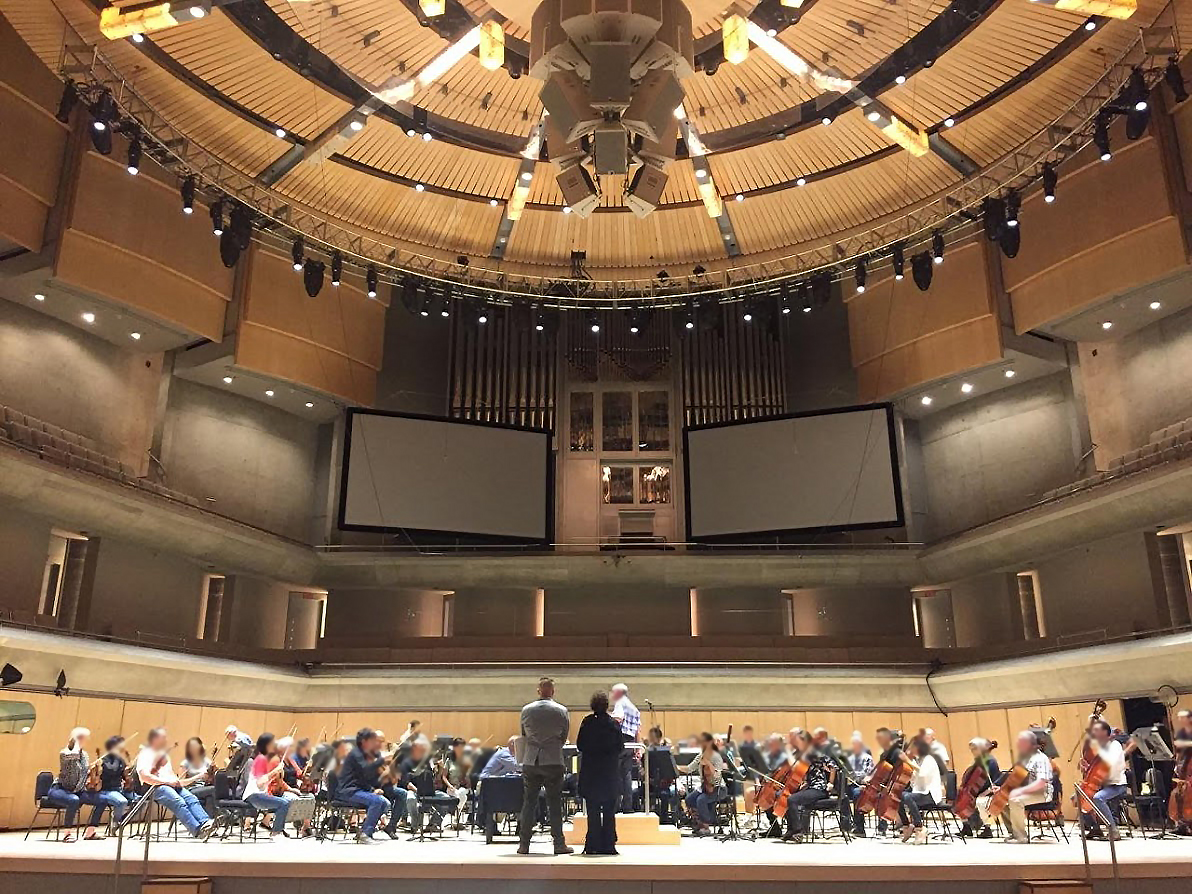
A reviewer for Ludwig Van, a classical music website, praised “Adizokan” for its sense of newness and for bridging Indigenous and European cultures. “Adizokan” is an Anishinaabemowin word meaning “a spiritual being that carries wisdom and knowledge,” and the composition’s seven movements correspond to the seven layers of the universe for Indigenous people.
Britton’s father is Métis, and he recalls powwow dancing as a child and roasting bannock outdoors. It wasn’t until his family moved to Winnipeg that he realized not everyone did these things. “I remember thinking, ‘It’s been a long time since there’s been drumming at school.’ When I asked a teacher about it, she sort of looked at me like, ‘What the hell are you talking about?’”
Although Britton says he never set out to be “a Métis composer,” he’s naturally attentive to both Indigenous and Western traditions. “My whole family background is about integration and survival.” In “Adizokan,” he says he tried to avoid having one culture “control the other.” Still, he admits to feeling discomfort around questions of identity. “I’m extremely aware of who I am, where I come from, and my differences. But people can get very prescriptive about identity – what you should or shouldn’t do if you’re Metis, for example. I think that’s ridiculous.”
***
On a crisp November morning, Britton is in full music-nerd mode as he shows me around the faculty’s Electronic Music Studio, which he has just finished refurbishing with brand new equipment. It looks like a professional audio-production facility: high-tech and sound absorbent. In one room, a 32-input mixing console stretches almost the full width of the space. An adjoining room, the teaching space, is mostly empty except for a large TV screen, 10 speakers that hang in a circle overhead and what looks like a grand piano but is actually a Disklavier – a computer-controlled piano that can play more precisely than any human and can record and play back a performance.
Britton, who is the studio’s director, opens a door to reveal a storage area piled high with old analog synthesizers and other antiques of music-making technology. Some are originals; some are newer versions of equipment from the 1950s, 60s and 70s. He keeps them around so today’s students can hear what they sound like, but also learn about the history of computers in music – and what made U of T’s studio a pioneering force.
Like today’s facility, U of T’s original Electronic Music Studio (founded in 1959 by Prof. Arnold Walter, the then-dean of the Faculty of Music), 6 was intended for research and teaching in electronic music; its two rooms were filled with cutting-edge equipment for the time, such as a multi-track tape loop player and a bank of sine wave oscillators controlled by touch-sensitive keyboards (a kind of proto-synthesizer).
These days, Britton’s students have access to far more sophisticated technology on their laptops, but before the dawn of personal computing, electroacoustic music, as it was known, was a tiny, specialized field centred at universities. Often, the pioneers making the first electronic music were also inventing their own instruments. Hugh Le Caine, who collaborated in the development of U of T’s original Electronic Music Studio, is sometimes credited with building the world’s first synthesizer, and eventually constructed almost two dozen electronic music instruments, giving them such colourful names as the Sackbut 7 and the Sonde.

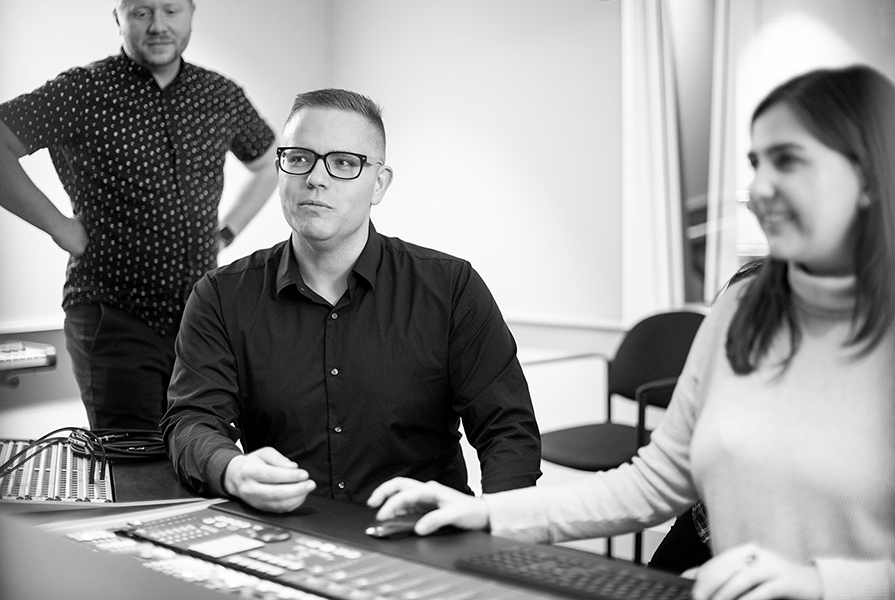
Musicians have used computers to assist with composing since those early days of electronic music. But the blazing speed and immense power of today’s equipment is opening up new avenues of experimentation, says Britton. For example, he could now create 1,000 variations of a musical snippet in a matter of seconds. “It’s a way of outsourcing a specific kind of work to a computer that allows you to make different choices as a composer, without giving over the creative parts,” says Britton. “You can burn through all these strange musical ideas in so little time. You can build complexity without getting bogged down.”
Britton emphasizes, though, that his goal as an instructor is not simply to teach students how to use the latest technology. More generally, he wants to teach them to listen effectively. He wants them to make informed decisions about the digital tools they choose to work with, and to understand how these tools will shape and influence what they compose. “Every piece of equipment here is intended to help students discover, think, create, listen, and collaborate,” he says.
Britton’s bigger hope is that they, like him, will participate in what he sees as a chain of people excited about musical expression, stretching around the globe and back to the beginning of human history. “Learning how to make innovative and interesting music, or say different things with sound in the 21st century, is at the heart of what I teach and what I do,” he says. “It’s what I’m excited about.”






No Responses to “ What Is Music When Almost Everything Can Be Music? ”
I had the pleasure of hearing some of Eliot Britton's music at a recent free concert of electric jazz - part of the U of T Faculty of Music New Music series. It was very interesting, challenging to listen to, but quite satisfying in the end. So much there to decipher and interpret.
It warms my heart to see good-old UTEMS (U of T Electronic Music Studio) alive and well after all these years, now with some attention and love. Thanks for the article. It made my day.
Here's a Beatles song that explored this concept: "Revolution 9" is a sound collage that appeared on the Beatles' 1968 eponymous release (popularly known as the "White Album"). The composition, credited to Lennon–McCartney, was created primarily by John Lennon with assistance from George Harrison and Yoko Ono. Lennon said he was trying to paint a picture of a revolution using sound. The composition was influenced by the avant-garde style of Ono as well as the musique concrète works of composers such as Edgard Varèse and Karlheinz Stockhausen.
Thank you for this article. Could you provide the names of software tools that Prof. Eliot Britton and his students are using to do their fantastic work? I am a U of T alum and very interested in music as a hobby.
@Gerardo
Prof. Eliot Britton responds:
At the Faculty of Music, students learn:
Protools HD, for mixing and surround mixing
Wavelab, for audio batch processing and mastering
Max/MSP/Jitter, for live electronics and video processing
Logic/Cubase/Reaper, for production and sound design.
Komplete Ultimate, for synthesis and instrumental libraries
Adobe Creative Cloud, for asset creation
Students also like using:
Ableton Live, for production and performance
Resolume, for live video processing
Each student typically has a laptop filled with their favourite tools.